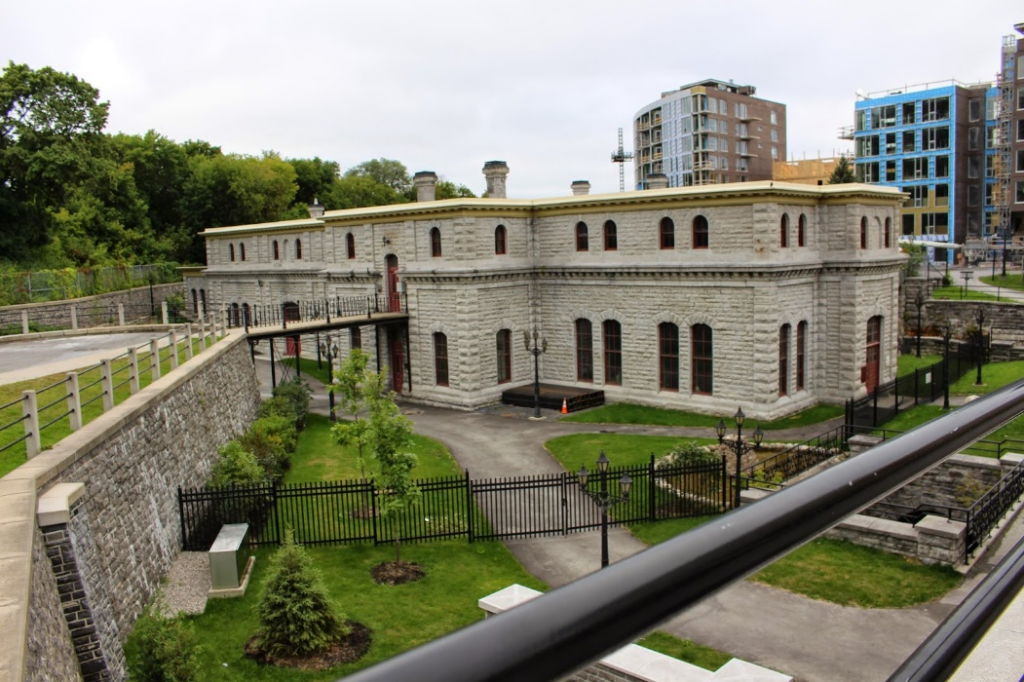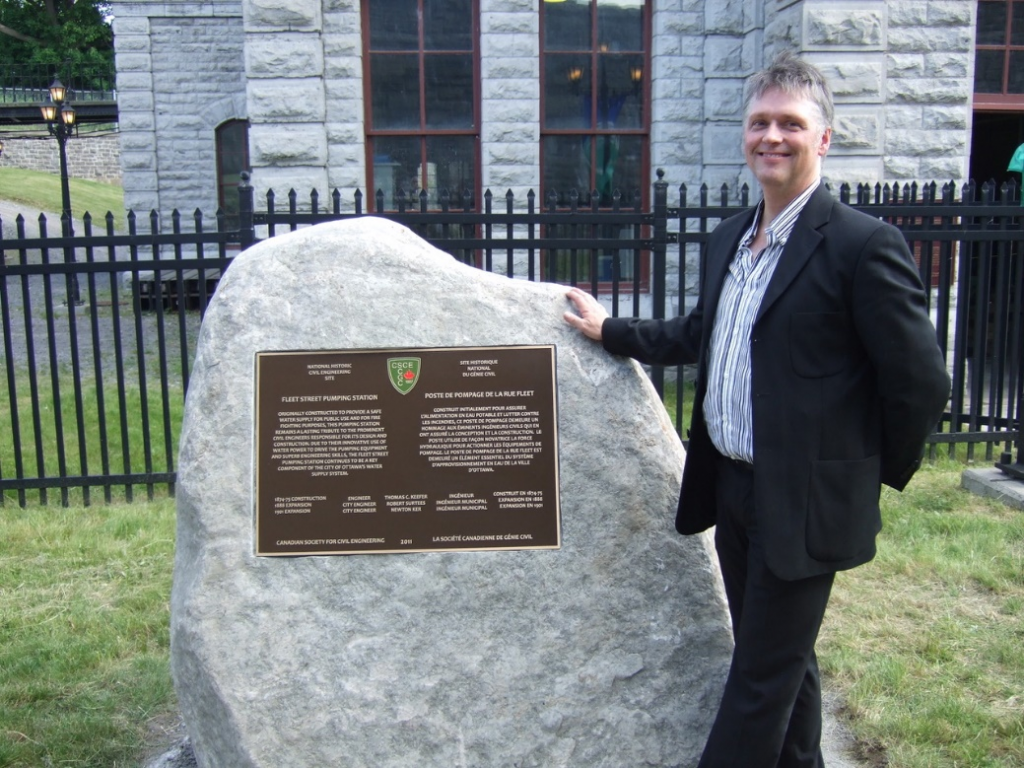
Site Location: Lat.: 45° – 24’ – 59” N; Long.: 75° – 42’ – 39” W. (GPS: 45.4160462, -75.713035). The pumping station is located at the east end of Fleet Street, on the LeBreton Flats. From Highway 417, take Bronson Avenue north 1.5 km and turn left (west) on Albert Street. After 0.5 km, turn right (north) on Booth St and, after 0.3 km, right (east) on to Fleet Street. From the east end of Fleet Street, walk 0.1 km to the site.
Plaque Location: The CSCE commemorative plaque is located on rock pedestal outside the pumping station.


Description: In 1869, Thomas Keefer’s report on “Water Supply for the City of Ottawa” recommended the use of the “economic and efficient” Holly pumping system with reciprocating-piston pumps and hydrostatic-pressure-regulating equipment to provide domestic water supply and fire flows. After much debate, Keefer was appointed chief engineer to oversee construction in 1872 and the station started pumping water in 1874. Although the cost increased from the 1869 estimate of $350,000 to a final cost of $930,693, the Ottawa Water Commission provided high praise to Keefer for his achievements. Chlorination of the supply was implemented only after the 1911 typhoid outbreaks.

Thomas C. Keefer (1821-1915). (Source: Library and Archives Canada/MIKAN 342973)
Historic Significance: Thomas Coltrin Keefer (1821-1915) was the founding president of the Canadian Society of Civil Engineers in 1887 and remained active in it, serving again as president in 1897. He was the first Canadian to become president, in 1888, of the American Society of Civil Engineers. His design of the Fleet Street pump station featured a novel use of water power to operate the pumps rather than the more traditional steam-driven engines used at the pumping station he had designed at Hamilton. A 2007 report to Ottawa City Council states that “this sustainable infrastructure saves the City of Ottawa approximately $1.2 million annually in energy costs.”

Plaque wording: National Historic Civil Engineering Site. CSCE. FLEET STREET PUMPING STATION. Originally constructed to provide a safe water supply for public use and for fire fighting purposes, this pumping station remains a lasting tribute to the prominent civil engineers responsible for its design and construction. Due to their innovative use of water power to drive the pumping equipment and superb engineering skills, the Fleet Street pumping station continues to be a key component of the City of Ottawa’s water supply system. 1874-75 Construction Engineer Thomas C. Keefer. 1888 Expansion City Engineer Robert Surtees. 1901 Expansion City Engineer Newton Ker. Canadian Society for Civil Engineering. 2011.
SCGC. Site Historique National du Génie Civil. POSTE DE POMPAGE DE LA RUE FLEET. Construit initialement pour assurer l’alimentation en eau potable et lutter contre les incendies, ce poste de pompage demeure un hommage aux éminents ingénieurs civils qui en ont assuré la conception et la construction. Le poste utilize de façon novatrice la force hydraulique pour actionner les équipements de pompage. Le poste de pompage de la rue Fleet est demeuré un élément essentiel du système d’approvisionnement en eau de la ville d’Ottawa. Thomas C. Keefer ingénieur construit en 1874-75. Robert Surtees ingénieur municipal expansion en 1888. Newton Ker ingénieur municipal expansion en 1901. 2011. La sociéte canadienne de genie civil.
Plaque Unveiling Ceremony (June16, 2011):
Mike Ircha, CSCE Ottawa Section Historian, served as Master of Ceremonies. Councilor Maria McRae, Chair of the City’s Environmental Services Committee presented on behalf of the City of Ottawa. The Member of Provincial Parliament, Yasir Naqvi also brought greetings from the Province of Ontario. He was followed by Vic Perry, CSCE President, and Alistair MacKenzie, Chair of the National History Committee. Mark Surtees who provided a summary of the historical significance of the Fleet Street Station. A small reception in the Fleet Street Station was held following the dedication ceremony.


Links to Online Documentation:
Mark Surtees, “Fleet Street Water Pumping Station”, Canadian Civil Engineer, 2011. (See page 16)